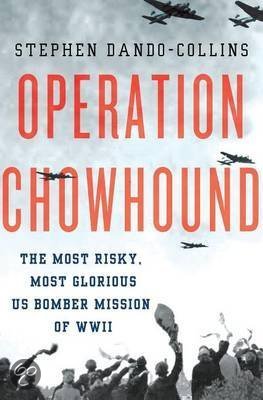Albert VanWey
Errors in navigation, like the one witnessed by Hal were in some incidents the cause of thess miss drops. More often were they the result of a failure of the drop mechanism. Albert VanWey was a radio-operator and waist gunner on a B-17G that was part of the 570th Bomb Squadron, 390th Bomb Group. On one of the Chowhound missions that VanWey flew, some of the burlap bags got stuck between the bomb bays. This prevented the doors from closing and so VanWey had to climb without parachute (there was no room for that) into the bomb bay and kick the bags loose.
Another crew that had trouble wit the drop mechanism was the crew of General Old. Charles Harvey flew as co-pilot with Old on this flight and he recalls that their flight up to the drop zone had been uneventful. Once over the drop zone the navigator pulled the switch, but nothing happened. General Old decided that they would go for a second run and try again. Rules for this mission dictated that the airplanes could just go round the drop zone and make a second round. They had to return to the Channel and turn halfway down the Channel. Once over the Channel general Old decided that one fourth of the way was enough and they turned back for a second try. This time the floor fell when the navigator pulled the switch and the food dropped nicely on the drop zone.
The food that did drop on the right spot, mostly survived the landing. Henry Eichhorn (96th BG) realized on this day that that wasn't true for all the food. When he flew over Schiphol, he saw a man with a wheelbarrow shoveling a pile of white material. Eichhorn figured that this was flower that had come from bags that had been dropped on the previous day. Eichhorn doesn't think that the bombers could have flown any lower on these drops. He remembers having to look up at the top of windmill sails, while over Holland.
It is not unlikely that several aircrafts had to return to their bases in England without dropping their food because their drop mechanism hadn't worked. The author hasn't found direct evidence that this was the case, but what is known, is that a number of bombers failed to drop their load for a variety of reasons.
The RAF also had it's share of trouble with the drops. This is good illustrated by the operation summary of the 218th Squadron after their drop on 29th April near Rotterdam.
"Summary: 10 Lancasters dropped 37 packs on Rotterdam. 13 other packs were brought back as they hung up despite several runs over the target. Dropping area was identified by the docks to the north. Packages were dropped in good concentration on the briefed area. There were some undershoots, only a few packs fell in the water to the north."
All in all the RAF didn't seem to have as much trouble with it's drops as the USAAF. The bombers of the RAF used two different systems to stack the food in the Lancasters. The first system the RAF used was simply stacking the food on the bomb doors, filling the bomb-bay bit by bit, while the doors were closed little by little. This method was time-consuming and in a number of cases the doors fell open during the loading of the aircraft. In those cases the groundcrew had to start over again.
The second way in which the food was placed in the bomb-bay was by using a large canvas bag. The food was stacked on the bag, which had been spread on the ground under the bomber. The bag was then lifted as a whole in the bomb-bay. This system proofed to be very handy for these food drop missions.
